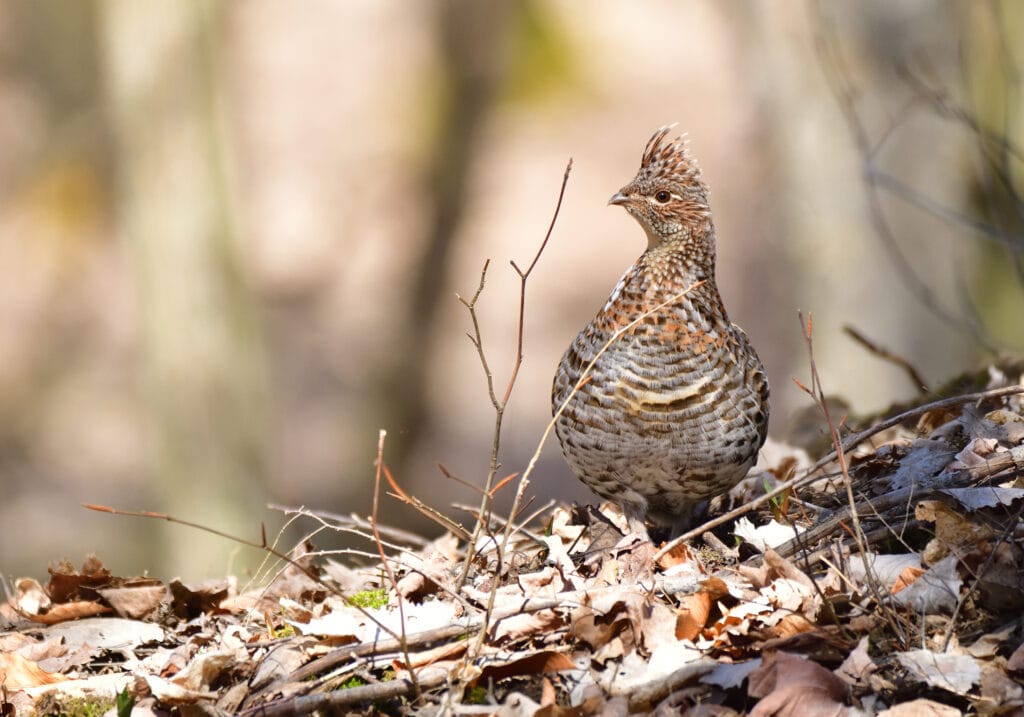The Ruffed Grouse has been the state bird of Pennsylvania since 1931. These relatives of chickens, turkeys, and quail are known for their unusual “drumming sounds,” made by beating the air with their wings, and for their flamboyant displays. Despite these two rather gregarious behaviors, the Ruffed Grouse is generally a somewhat secretive bird which is more often heard than spotted. For this reason, reports of so-called “tame” Ruffed Grouse which boldly approach humans have aroused the interest of the Pennsylvania Game Commission.
Related Article: Rare Goose Sighting Draws Birdwatchers in Michigan
Some who have witnessed these “tame” Ruffed Grouse might take issue with the name. Often, the birds reported to be “tame” are simply unafraid of humans. This means that they are sometimes aggressive and have been known to peck at humans. While not exactly friendly, this behavior does demonstrate a marked lack of fear which is far outside of the expected behavior for these shy little game birds.
Previously, it was theorized that this behavior arose out of hormonal changes making the birds especially territorial. Other theories included drunkenness. It was hypothesized that the birds might be consuming berries that had fermented enough to produce alcohol and induce a drunken state. Now, though, the Pennsylvania Game Commission has a new theory that they aim to test: genetics.
While “tame” behavior may indeed be due to hormones or diet, the Pennsylvania Game Commission, in collaboration with Pennsylvania State University, are investigating the possibility that a distinct population of Ruffed Grouse might be genetically distinct in a way that makes them predisposed to “tame” behaviors.
In order to accomplish this, the Pennsylvania Game Commission is asking Pennsylvanians to report “tame” grouse encounters. Encounters should be reported to [email protected] with a description of the encounter, the name and contact information of the person reporting the encounter, a geographical location, and any other relevant details.
Researchers from the Pennsylvania Game Commission will then be sent to the location of the encounter to try and capture the grouse in question. Captured Ruffed Grouse will be subjected to genetic testing. Similar to human genetic test kits for ancestry research, the testing process will involve non-invasive mouth swabs. After genetic materials are collected, the grouse will be released immediately, allowing them to be returned to the exact site from which they are taken. This process is intended to be as harmless and non-disruptive as possible for the Ruffed Grouse involved.
Whether the “tame” behavior is genetic or not, the testing of birds who exhibit this behavior is bound to be revealing.
Popular Article: Spring Migration is a Great Reminder to Be Responsible With Feeders and Baths

